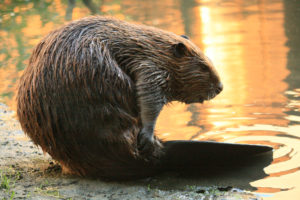Invasive Insurgency Shakes Patagonia
 They have influenced wars, galvanized economies, and revolutionized high fashion. Their pelts have driven trappers across oceans, built the city of Seattle, and graced the heads of countless noblemen in seventeenth-century Europe. They have even flavored millions of cakes with their castor oils, an important ingredient in traditional vanilla flavoring. Medieval European hunters believed them capable of gnawing off their own testicles as a defense method when pursued. Modern hunters have known them to chew off their own legs to escape traps. Who are they? They are castor canadensis, the American beaver, and they are effecting the largest ecological shift in Patagonia’s forests since the ice age.
They have influenced wars, galvanized economies, and revolutionized high fashion. Their pelts have driven trappers across oceans, built the city of Seattle, and graced the heads of countless noblemen in seventeenth-century Europe. They have even flavored millions of cakes with their castor oils, an important ingredient in traditional vanilla flavoring. Medieval European hunters believed them capable of gnawing off their own testicles as a defense method when pursued. Modern hunters have known them to chew off their own legs to escape traps. Who are they? They are castor canadensis, the American beaver, and they are effecting the largest ecological shift in Patagonia’s forests since the ice age.
Beavers made their first appearance in austral South America in 1946 when the administration of President Juan Perón introduced 20 Canadian beavers to a pond in Tierra del Fuego, Argentina’s southernmost region. The idea behind the introduction was to develop a lucrative Patagonian fur economy, providing jobs and touristic appeal to an economically starved area of the country. Unfortunately, Patagonia’s beaver population has risen since then to about 200,000 animals on the Chilean side alone. Argentina’s exact population is unknown but is at least as large.
The consequences of this unintended proliferation haven proven grave, and both Chile and Argentina have been slow to respond. Beavers in North America generally keep river habitats healthy and often restore them when damaged or drained. Patagonia’s endemic tree species, however, do not grow back once felled or flooded, as they rely on seed banks stored in the soil that die when inundated.
The province of Tierra del Fuego estimates the rodents have destroyed an area of woodland roughly twice the size of Buenos Aires. The Wildlife Conservation Society claims that beavers have affected 95 percent of the archipelago’s water basins. Naturalist Claudio Bertonatti compares affected landscapes to those of Poland after the second world war when all of the large forests were bombed, burned, and levelled: “What happened here? The beaver happened.”
Both the Chilean and Argentine governments have initiated efforts to combat voracious deforestation and flooding, but such programs have had little effect. Initiatives began in the nineties when the two governments attempted to inspire a market demand for pelts and generate a trapping industry, but the demand never appeared. Chilean and Argentine officials later began training local trappers and offering a bounty for each beaver. The two governments even encouraged regional restaurants to serve beaver meat.
Unfortunately, the desired results did not materialize. However, what appeared was a new and surprisingly cooperative relationship between the usually bitter neighbors. In 2006, Argentina and Chile created a joint committee on the eradication of beavers, which still functions as the primary authority on the issue. Argentina developed its own project in 2016, with which it hopes to kill 100,000 beavers in the next years. Both countries have received Global Environment Facilities grants for pilot programs.
“Beavers won't devour Patagonia, but they will destroy large amounts of forests and contaminate vast water sources,” says Barbara Saavedra, head of Chile’s Wildlife Conservation Society. “So we want to stop them before they reach the Panama Canal. It's a sad but true joke.” Whether the beaver’s impact will reach this far is questionable, but it will nevertheless continue to prove itself one of the world’s most radical rodents and one of history’s most controversial creatures.
